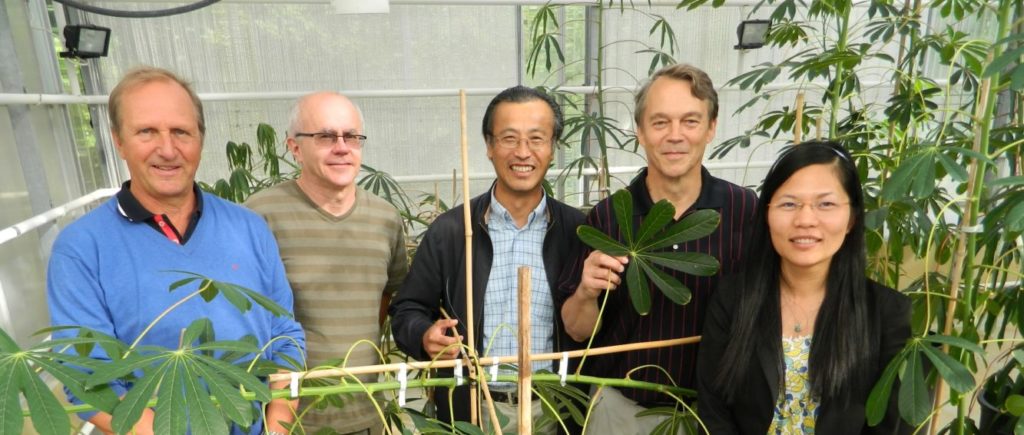A growing population needs an increasing amount of food and energy. Due to global climate change and volatile fossil fuel prices, bioenergy production attracts more and more attention and investment. Bioenergy is able to provide energy with less CO2 emissions and is claimed to be able to foster economic growth in often poor and rural areas as well as provide more energy independence for the countries that produce it.
However, biofuel ethanol can be produced from traditionally food crops such as corn, sugarcane, soybean, rapeseed or it is produced from the biomass feedstocks that occupy large land areas which can be used for growing food. Thus, increases in biofuel production creates numerous direct and indirect impacts on food, energy and agriculture systems and the discussion around these issues has already become a “sea of controversy”.
One of the issues, for instance, is the debate around food prices and biofuels: growth in biofuel production can lead to higher food prices. On one hand, higher food prices make food less accessible for poor, but on the other hand, higher food prices mean higher income for the farmers and, hence, increased purchase ability. However its not so simple, there are many other angles of this controversy between food and fuel such as land use change, availability of water and changes in job markets.
Food and energy systems are connected to all spheres of human life and major switches in both of them may cause effects that are hard to control or predict. In order to solve the food vs fuel conflict, substantial resources have been allocated for research and development of the second generation of biofuels that are made from non-food crops, crop residues and waste and can combine food farming and fuel production.
A group of researchers from Swedish University of Agricultural Sciences (SLU) and China Agricultural University (CAU) have been working with cassava research in Sothern China. Cassava (Manihot esculenta Crantz.) is cultivated for its root starch, which is used mainly as food and feed, supporting livelihoods for 0.5–1.0 billion people in many developing countries in tropical Africa, Asia and Latin America. Global cassava root production in 2011 was about 230 million tons, using about 19 million hectares of land, including unproductive and low precipitation areas. Cassava stems have about half mass of the root production, but nowadays are mainly seen as a waste and have been overlooked as starch, bio-products and in energy production.
This project sought to find use for the over-ground biomass of the cassava crop, or, in other words, for the cassava stems. The researchers had noticed that after harvest most of the cassava stems were left on the side of the fields to be burnt or to decompose. After examining these residues, it was found that cassava stems have remarkably high concentrations of starch – it constitutes up to 30% of dry mass. Relatively simple water washing methods can be used to extract the starch from cassava, gaining about 50% of the starch content. This can potentially lead to over 80% increase in global cassava starch production, and make the roots available as food for additional 30 million people in the world today and for 100 million by 2030.
The study also argues that the residues and wastewater from starch extraction can be used for bio-fuel (solid and biogas) production and generate added value. After that the residue from this process, the so-called bio-sludge, can be used as a fertilizer. Håkan Örberg and Shaojun Xiong, the researchers who undertook the study commented, “we think there are great possibilities with these new ideas of using cassava stems, which today are considered as a waste problem, instead of been used as an industrial feedstock. Without land use expansion, this may contribute to sustainable development and help fighting malnourishment and poverty globally”.
Like any other options, cassava solution is not perfect: both tubes and stems of the plant contain cyanide. The content depends on the species and is generally low in species grown for energy use. However, basing on personal experience, Håkan Örberg warns that there is a risk to human health in case of exposure to dry dust from cassava stems: “People who work with this approach must be aware of this risk, but as long as it is handled in whole stems and upgraded in a factory in wet (moist) conditions, the risk to human health is very low”.
Another drawback that is noted by the research team is about using cassava stems in a great extent. Excessive use of biomass from agricultural fields can pose a risk of lower carbon in soils. “This effect has not been studied scientifically, as far as we know, but should be considered. We suggest avoiding this by returning the residues of the cassava stems after the extraction of starch and biogas. Carbon in the residues is in fact more available for soil than in the untreated form”, – adds Håkan Örberg.
Håkan Örberg is working as a research assistant at Swedish University of Agricultural Sciences. He is a MSc in agriculture and chemistry and is also an Agricultural engineer. He has been an manager of the research pilot plant BTC (Biofuel Technology Centre) for more than ten years where a lot of experiments with cassava stems have been done. He has during the years been working with a number of biomass materials in different forms and for different energy use.
Shaojun Xiong is an Associate professor of bioenergy technology at Swedish University of Agricultural Sciences, PhD, the principle investigator of the projects Cassava stems for energy use. He got his PhD in Sweden (at Umeå University) 1999 and has been working with biomass material properties and biofuel feedstock production for many years. He is also an adjunct professor in China Agricultural University.
“Cassava stems: a new resource to increase food and fuel production” full text pdf
